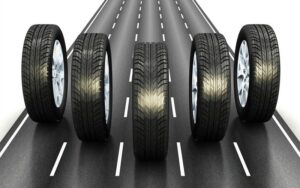
Which tire should I choose for my car? How do I choose the best tires for my car? If you are asking yourself these questions, our article will help you take into account the important criteria to make the right choice.
Tire size may seem to be the only important factor in deciding which tires to purchase. However, as we will see, it is also essential to take into account your driving style and weather conditions . To help you make the right choice, we will present the European labeling system and provide you with a decision support tool .
Respect the dimensions indicated by the manufacturer
This is the very first criterion to take into account when choosing tires for your car. As a tire does not have a standard size, you must first identify the tire sizes compatible with your vehicle before making your choice, based on the other criteria that we will explain to you below.
car edito find tire size tiresidewall tips and advice
Where can I find the tire size for my car?
Examine the sidewall of one of your tires and write down the numbers and letters you find there.
This information will help you find the right tires for your car.
Here is an example of complete tire dimensions: 255/55 R17 72H
You can also find the tire dimensions in your driver or passenger door:
Tire dimensions are also indicated in the manufacturer’s manual for your vehicle (most of the time placed in the glove box). These documents usually contain all the information on the size and specifications of your tires, as well as the recommended pressure.
What do these numbers and letters mean?
Tire width or section width: (Example: 255)
The tire width in millimeters is measured from the widest point of the outer sidewall of the tire to the widest point of its inner sidewall.
Aspect ratio: (Example: 55)
The aspect ratio is the percentage ratio between the height of the sidewall and the width of the tire. The lower the ratio, the lower the sidewall, providing better grip in corners, but less comfort.
Structure: (Example: R)
This is the internal structure of the tire. It can be “Radial” (R), as with most tires, “Diagonal” (D), or even “Cross-belted” (B).
Rim diameter: (Example: 17)
This number is expressed in inches (1 inch = 2.54 cm) and corresponds to the internal diameter of the rim which will accommodate the tire.
Load index: (Example: 72)
This index indicates the maximum load that a tire can support at a given maximum pressure. There is a table specifying the correspondence between the index indicated and the load that the tire can support.
The speed index indicates the maximum speed at which the tire can travel, carrying the load indicated by the load index, under the conditions of use specified by the manufacturer. The speed indices are between A (the smallest) and Y (the largest), with one exception: H is located between U and V.
To determine the maximum speed for your tire, consult the speed index table. We do not recommend or condone exceeding the maximum permitted speed.
See the speed index table
HL tires are designed to support the weight of electric and hybrid vehicles. They allow you to use the same tire size, but with a greater load capacity.
How to recognize an HL tire? Thanks to the HL prefix located at the start of the tire size.
The acronym OE stands for “Original Equipment”. This clarification indicates that the manufacturer of your vehicle has approved these tires to be fitted as standard on your vehicle.
Audi, BMW, Mercedes and other manufacturers equip their vehicles with tires specially designed for their brand. A special OE marking is then present on the sidewall of the tire. If this is the case for your vehicle, MICHELIN recommends that you replace your tires with tires bearing the specific OE marking.




